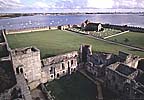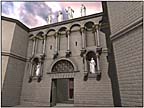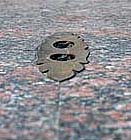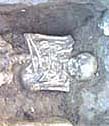 "Archaeologists working at Portchester Castle believe they have discovered evidence that it was once a Roman trading port.
"Archaeologists working at Portchester Castle believe they have discovered evidence that it was once a Roman trading port.
Topographic and geophysical surveys of the ancient site have revealed a number of previously uncharted structures dating from Roman, Saxon and medieval times. "
In the outer bailey features were discovered that relate to the Roman, Saxon and medieval periods of the site. Between the inner and outer ditches possible remnants of the Roman fort and a number of medieval and post-medieval structural features were detected.
Portchester’s outer defences incorporate the well-preserved remains of a Roman fort. It is thought to have been established between AD 285 and 290 by Marcus Aurelius Carausius who was instructed by the Emperor Diocletian to clear the seas of pirates.


 Emperor Antoninus Pius hails you as you approach the
Emperor Antoninus Pius hails you as you approach the 
 "After a decade of painstaking cleaning, Berlin's Pergamon Museum has unveiled the restored marble frieze of the Pergamon Altar, the second century B.C. centerpiece of its collection. The 371 foot-long frieze decorated the outside walls of the altar, which was built between 197 and 156 B.C. in the present-day Turkish town of Bergama.
"After a decade of painstaking cleaning, Berlin's Pergamon Museum has unveiled the restored marble frieze of the Pergamon Altar, the second century B.C. centerpiece of its collection. The 371 foot-long frieze decorated the outside walls of the altar, which was built between 197 and 156 B.C. in the present-day Turkish town of Bergama.